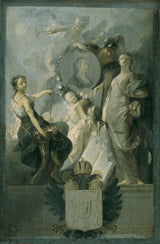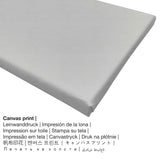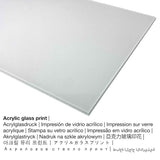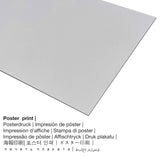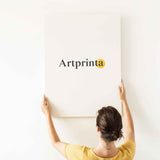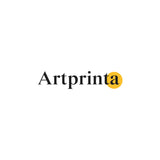Franz Anton Maulbertsch, 1769 - Ụtụ Empress Maria Theresia - ọmarịcha nka.
Ụtụ gụnyere. Mbupu gbakọrọ na ndenye ọpụpụ.
Nhọrọ akụrụngwa ngwaahịa
In the dropdown menu next to the article you can choose your individual material and size. The following options are available for individualization:
- Mbipụta kanvas: A canvas print is a printed cotton canvas stretched on a wooden frame. How do I hang a canvas print on the wall? Canvas Prints have the advantage of being low in weight, which implies that it is easy and straightforward to hang up your Canvas print without the support of extra wall-mounts. Therefore, a canvas print is suited for all types of walls.
- Mbipụta iko acrylic (nke nwere ezigbo mkpuchi iko n'elu): The print on acrylic glass, which is often described as a plexiglass print, will change the artwork into décor. Your own version of the artwork will be custom-made with the help of modern UV direct print technology. The great benefit of an acrylic glass fine art copy is that contrasts and smaller details will be exposed due to the delicate tonal gradation in the print.
- Mpempe akwụkwọ ederede (akwa akwa akwa): A poster print is a UV printed cotton canvas paper with a granular finish on the surface. It is particularly suited for putting the art copy with a customized frame. Please bear in mind, that depending on the absolute size of the poster we add a white margin 2-6cm round about the artwork, which facilitates the framing with your custom frame.
- Aluminom dibond mbipụta (ọla): An Aluminium Dibond print is a print with an impressive depth. Its non-reflective surface structure make a fashionable look. The Direct Print on Aluminum Dibond is the best introduction to art prints with aluminum. The bright and white components of the artpiece shimmer with a silk gloss, however without any glow. The colors are luminous and vivid in the highest definition, details of the print appear clear and crisp.
Ozi dị mkpa: We try all that we can in order to depict our art products as closely as possible and to demonstrate them visually on the various product detail pages. Still, the tone of the printed materials, as well as the print result can vary somehwat from the representation on your device's monitor. Depending on your settings of your screen and the nature of the surface, color pigments may not be printed one hundret percent realistically. Given that the are processed and printed manually, there might also be slight differences in the motif's exact position and the size.
What does the curator team of the Belvedere write about this 18th century artwork made by Franz Anton Maulbertsch? (© - Belvedere - Belvedere)
The particularly finely crafted paintings served as a template for a radiertes and stung sheet of Johann Veit Kauperz, which was used as the frontispiece of the fifth volume of Supplementum Codicis Austriaci. Although the publication falls into the year 1777, the graphic was first mentioned in 1769 in a meeting considered complete and praised Maulbertsch than the Inventor. A portrait medallion Maria Theresia with widow veil shows almost in profile, is surrounded by several figures. In the Fama floats with trombone and laurel wreath, while the helmeted Minerva instructs two putti when decorating the portrait with flowers. Left, the figure of the prince's generosity is seated with scepter and cornucopia, the right is that of Justitita blindfold, sword and scales. The basis of the figural scene forms a pedestal, is double-headed eagle and national coat of arms are in the middle. It is obvious that both the medallion as was also the emblem of the Maria Theresa Thaler, who was then an official currency, godfather confessed. The draft introduces located at the obverse of the coin Latin inscription is even played, but was waived the down later. smoothed that the painting in the style, extremely precise in the design and color appear greatly reduced, is due in particular to the function as a stub template. Nevertheless, classical aspirations are likely to be responsible for this clarity. [Georg Lechner, 9/2009]
The masterpiece e sere site na nwoke Ọstrịa artist Franz Anton Maulbertsch. Ụdị nke ọrụ nka tụrụ nha: 31 x 20,5 cm - akụkụ etiti: 39 × 29 × 4 cm. Mmanụ na kwaaji was applied by the Austrian artist as the technique for the artpiece. Today, this work of art is in the the nke Belvedere digital art collection. With courtesy of: © Belvedere, Vienna, inventory number: 4238 (license: public domain). Creditline of the artwork: transfer from the Kunsthistorisches Museum, Vienna. - 1948 inventory in 1922. Besides this, the alignment is in portrait format na nwere akụkụ ruru nke 2: 3, nke pụtara na ogologo bụ 33% mkpụmkpụ karịa obosara. The painter Franz Anton Maulbertsch was a European artist from Austria, whose art style can mainly be assigned to Baroque. The Baroque artist was born in 1724 in Langenargen, Baden-Wurttemberg, Germany and passed away at the age of 72 in 1796 in Vienna, Vienna state, Austria.
Ozi ahaziri na nka
| Aha nke ọrụ nka: | "Tribute to Empress Maria Theresia" |
| nhazi ọkwa: | sere |
| Otu sara mbara: | nka ochie |
| oge: | 18th narị afọ |
| Emepụtara na: | 1769 |
| Afọ nka: | 250 afọ |
| Usoro izizi: | mmanụ na kwaaji |
| Akụkụ izizi (ọrụ nka): | 31 x 20,5 cm - akụkụ etiti: 39 × 29 × 4 cm |
| Egosiputara na: | Belvedere |
| Ebe ngosi nka: | Vienna, Austria |
| Weebụsaịtị ihe ngosi nka: | Belvedere |
| Licensedị ikike: | ngalaba ọha |
| Site n'aka: | © Belvedere, Vienna, nọmba ngwa ahịa: 4238 |
| Ebe kredit nke ọrụ nka: | nyefee site na Kunsthistorisches Museum, Vienna. - 1948 ngwaahịa na 1922 |
Nkọwa edemede
| Nkewa ngwaahịa: | ọrụ mgbidi |
| Usoro mmeputakwa: | dijitalụ mmeputakwa |
| Usoro mmepụta: | Mbipụta UV ozugbo (mbipụta dijitalụ) |
| Mmalite nke ngwaahịa a: | arụpụtara na Germany |
| Ụdị ngwaahịa: | na mmepụta ihe |
| Eji ngwaahịa emebere: | mgbidi gallery, ime ụlọ |
| Nhazi: | nhazi ihe osise |
| Ụdị anya: | 2: 3 |
| Nkọwa nke oke onyonyo a: | ogologo bụ 33% mkpụmkpụ karịa obosara |
| Akụrụngwa dị: | ígwè obibi akwụkwọ (aluminium dibond), ebipụta canvas, mbipụta akwụkwọ mmado (akwụkwọ kwaaji), mbipụta iko acrylic (nwere ezigbo mkpuchi iko) |
| Mbipụta kanvas (akwa akwa na etiti ihe ndọtị) dị iche iche: | 20x30cm - 8x12", 40x60cm - 16x24", 60x90cm - 24x35", 80x120cm - 31x47", 100x150cm - 39x59" |
| Mbipụta iko acrylic (nwere ezigbo mkpuchi iko) dị iche iche: | 20x30cm - 8x12", 40x60cm - 16x24", 60x90cm - 24x35", 80x120cm - 31x47", 100x150cm - 39x59" |
| Nhọrọ nke mbipụta akwụkwọ mmado (akwụkwọ kwaaji): | 40x60cm - 16x24", 60x90cm - 24x35", 80x120cm - 31x47" |
| Aluminium dibond ebipụta (ihe aluminium) nha dị iche iche: | 20x30cm - 8x12", 40x60cm - 16x24", 60x90cm - 24x35", 80x120cm - 31x47" |
| Nhazi mbipụta nka: | mbipụta nka na-enweghị isi |
Ozi omenka
| Aha onye nka: | Franz Anton Maulbertsch |
| Aha nka ndị ọzọ: | Maulbertsch, franz maulpertsch, maulpertsch ant. fr., maulpertsch, Ant. Maulpersch, Anton Franz Maulbertsch, maulpertsch f. a., Maulperz, Maubertz, Maulpersch Ant., Maulbersch Anton Franz, Maulpertsch Anton Franz, F. A. Maulbertsch, Franz Anton Maulbertsch, Maulpertsch Franz Anton, Maulbertsch Franz Anton, Maulberts, Malberz Anton Franz, Franz Anton Maulpertsch, Anton Maulpersch, Franz A. Maulbertsch, Anton Franz Maulpertsch, Maulberch, Maulpertz, Maulbertsch Anton Franz |
| Gender: | nwoke |
| Obodo onye nka: | Ọstrịa |
| Ọrụ: | onye na-ese ihe |
| Mba onye si: | Austria |
| Nhazi nke onye nka: | nna ukwu ochie |
| Ụdị nke onye na-ese ihe: | Baroque |
| Afọ ọnwụ: | 72 afọ |
| Afọ amụrụ: | 1724 |
| Amụrụ na (ebe): | Langenargen, Baden-Württemberg, Germany |
| Nwuru: | 1796 |
| Nwụrụ na (ebe): | Vienna, Vienna steeti, Austria |
Copyright right, www.artprinta.com (Artprinta)

